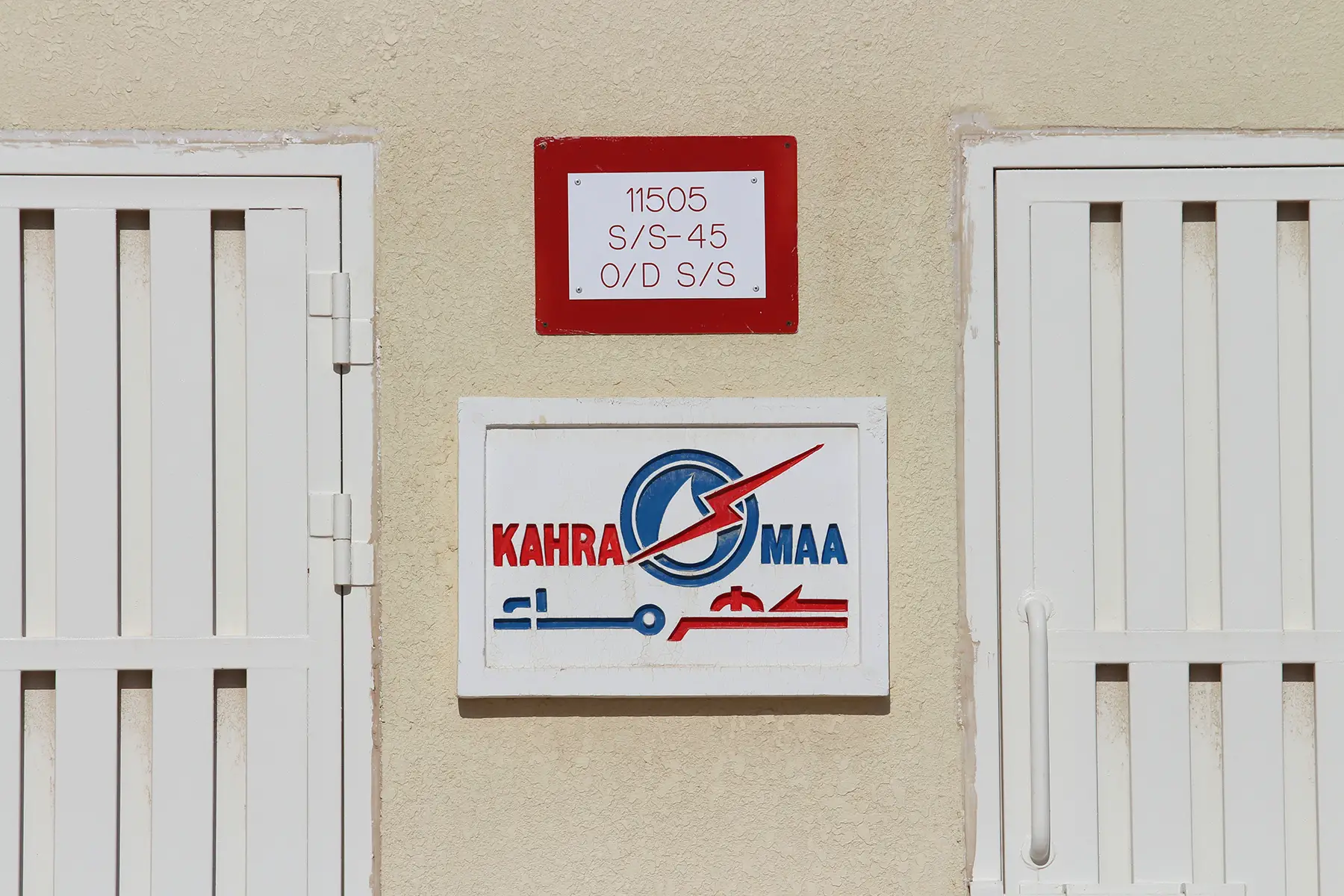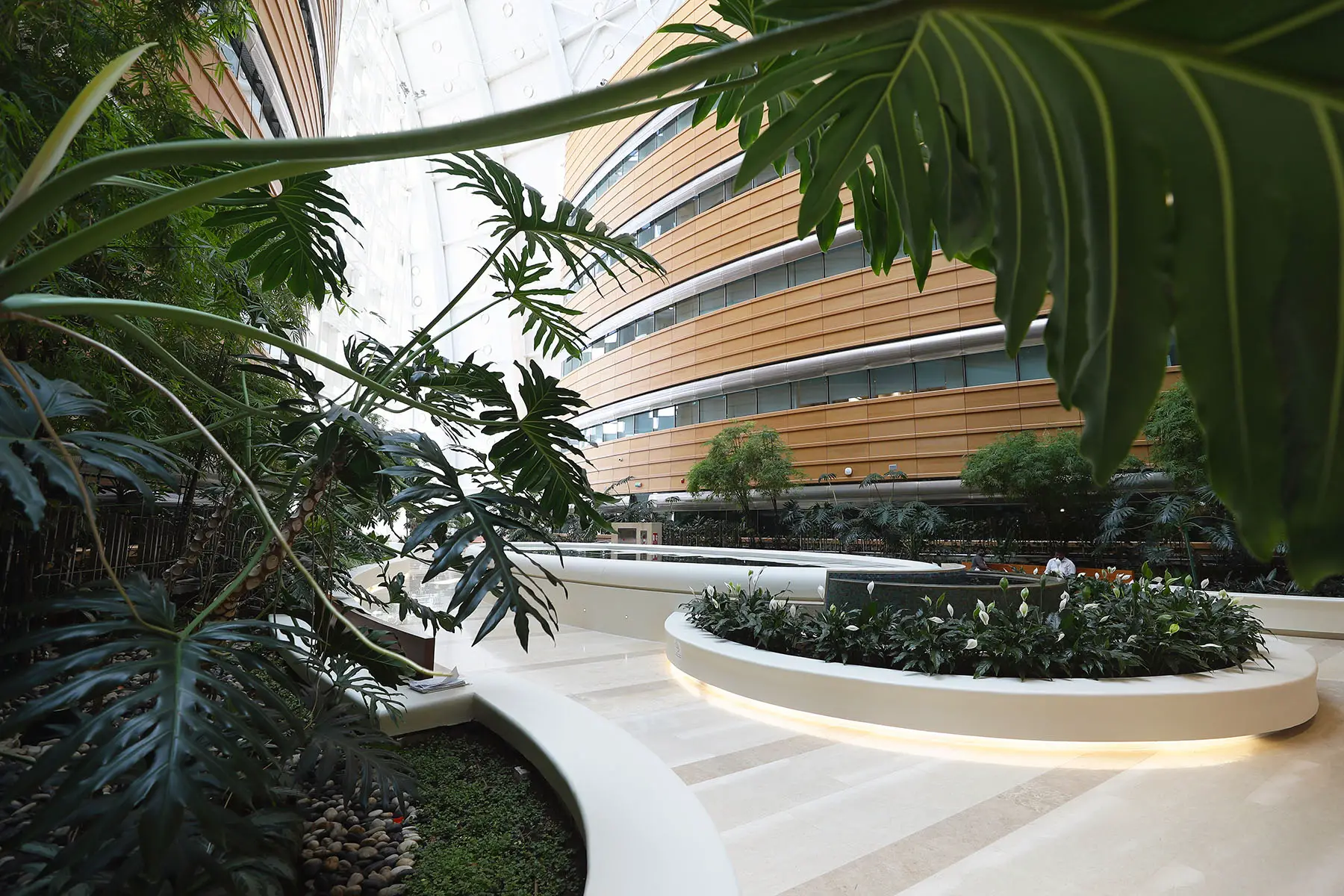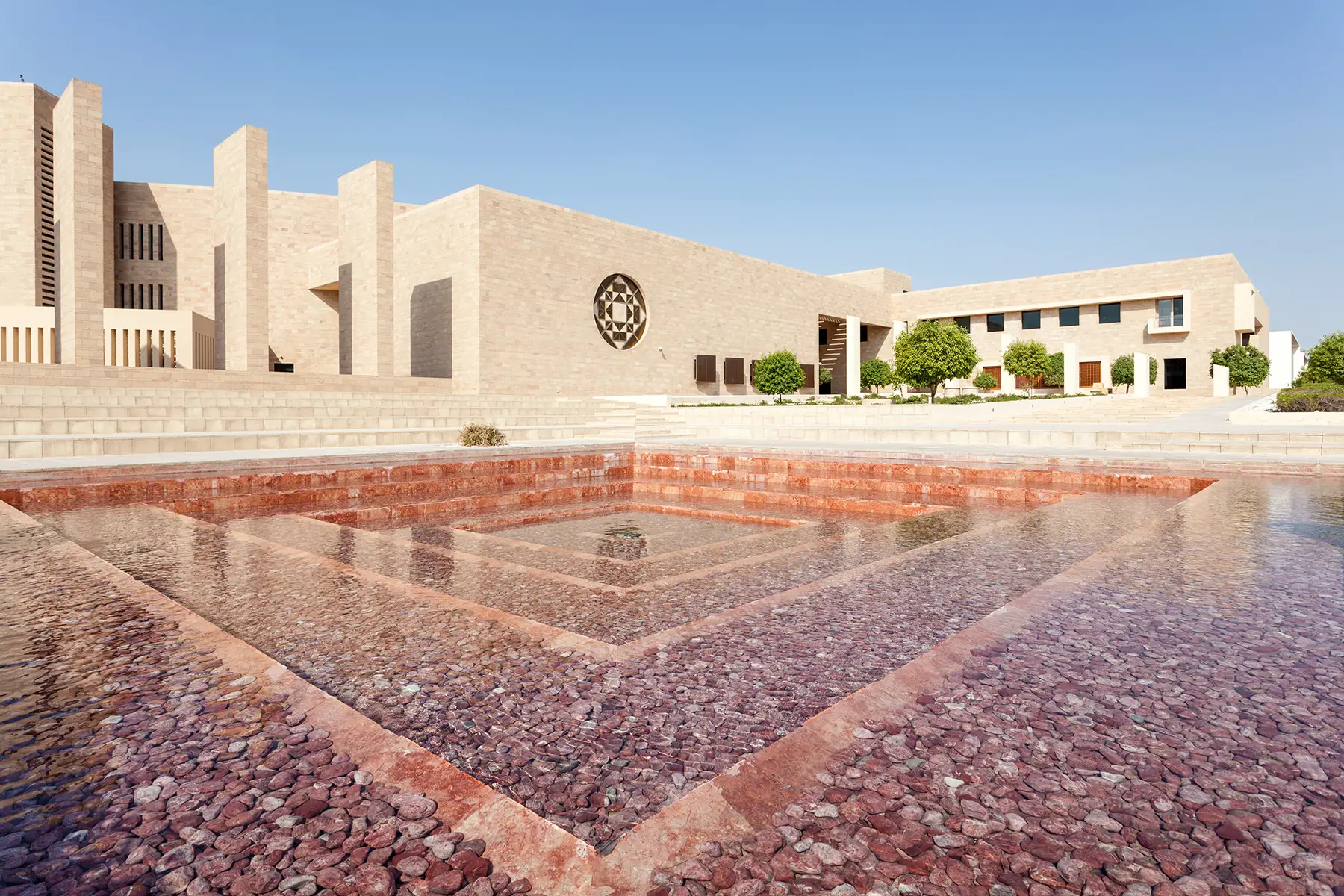Qatar is certainly one of the more expensive countries in the Middle East. The cost of living – especially in the capital, Doha – is comparable to other major cities around the world.
Because a lot of food is imported, you can expect to pay much more for it than you would normally. Similarly, accommodation is expensive in this affluent country. That said, salaries are high, and with many government-subsidized expenditures, you will likely (maybe) have a comfortable life there.
For more on the cost of living in Qatar, continue reading the following:
Sirelo
It’s no secret that moving abroad can be stressful. Sirelo’s team of removal advisers is here to help. They provide five free quotes from international shipping companies so you can find the best options at the best prices. Take the stress out of your relocation to Qatar with Sirelo.
Is Qatar’s economy good?
With a GDP per capita of US$112,280 (total GDP: US$244.7 billion), Qatar is the fifth-richest country in the world, trailing behind Luxembourg, Macao SAR, Ireland, and Singapore (IMF, 2024). The International Monetary Fund (IMF) predicts that Qatar’s GDP will grow by 2.0% in 2024 and 2.0% in 2025.

Inflation and disposable income in Qatar
Of course, the GDP per capita doesn’t mean all Qatari residents have just over 100K to spend. According to Statista (2025), the actual disposable income per household is US$34,970 per year (or US$2,914 per month). The Qatari government is currently working on the 2023/2024 Household Income and Expenditure Survey (HIES), which will provide more detail.
In 2021, ESCWA reported that only 0.4% of Qatar’s citizens lived below the poverty line. However, this figure excludes foreign residents and migrant laborers, who make up most of the country’s population. Statista forecasts the actual number to be around 8.0% in 2024.
In terms of inflation, Qatar’s average headline inflation for 2025 is expected to be 2.3%, way below the Gulf Cooperation Council (GCC)’s average of 3.4%.
Learn more about average salaries and incomes in our article on minimum wage in Qatar.
The cost of living in Qatar in 2025
Unfortunately, the results of the 2023/2024 HIES survey have not yet been published. This article will therefore use Statista’s estimations of Qatar’s household expenses. In 2025, people are expected to spend US$2,051 (or QR7,446) per month.

Keep reading for an overview of the cost of living expenses you might come across in your daily life in Qatar.
The price of groceries in Qatar in 2025
Beer, wine, and liquor
Qatar’s alcohol laws make that residents are only allowed to buy and consume alcohol with a permit, while tourists may drink at licensed bars and hotel restaurants.
Alcoholic drinks are more expensive in Qatar than in most other places. A pint of beer in a bar typically costs QR50–100, while a bottle of wine will set you back around QR66–140.
You can also buy alcohol from the Qatar Distribution Company, the country’s only liquor store. Beer costs around QR30–50, depending on the brand. The price of most strong drinks (e.g., vodka or whiskey) starts from QR150–180, depending on your drink of choice.
Food and drink
Because much of Qatar’s food is imported, households spend more on groceries than everything else. The monthly average spending on food and non-alcoholic drinks is expected to be QR2,051 per person (2025).

The average price ranges* of basic supermarket items include:
| Product | Price range | Product | Price range |
| Apples (1 kilo) | QR6.00–9.00 | Water (1 liter) | QR0.66–4.00 |
| Bread (1 loaf) | QR3.50–7.25 | Regular milk (1 liter) | QR7.50–8.00 |
| Cheese (1 kilo) | QR14.00–32.00 | Rice (1 kilo) | QR6.50–9.00 |
| Coffee (100 gram) | QR4.50–29.00 | Tea (per bag) | QR0.11–0.55 |
| Eggs (12) | QR11.00–11.50 | Tomatoes (1 kilo) | QR7.00–40.00 |
| Orange juice (1 liter) | QR3.00–6.75 |
Hygienic and household products
Hygienic and household products are essential for a healthy, comfortable lifestyle. These include everything from toothpaste and shampoo to dish soap (or washing-up liquid) and toilet bleach. The average price ranges* of these necessities include:
| Product | Price range | Product | Price range |
| All-purpose cleaner (1 liter) | QR5.00–9.00 | Shampoo (200 ml) | QR5.50–50.00 |
| Deodorant (100 ml) | QR4.00–16.00 | Soap (1 bar) | QR2.25–21.00 |
| Dish soap (1 liter) | QR0.70–18.12 | Menstrual cup | QR50.00 |
| Garbage bags (per bag) | QR0.40–5.15 | Toilet paper (per roll) | QR0.13–1.84 |
| Laundry detergent (1 liter) | QR9.33–30.55 | Toothpaste (150 ml) | QR5.00–34.00 |
2025 housing costs in Qatar
In 2025, the average monthly housing costs in Qatar are expected to be QR1,552 per person. This likely includes rent and mortgage payments, water, electricity, gas and other fuels.

Rent and property prices
Real estate prices vary greatly throughout Qatar. Homes in Al Kharayej (الخرايج), Al Mansoura (المنصورة), and Doha (الدوحة) are comparatively more expensive than those in rural areas and less popular cities.
In 2024, the median rent was QR159 per square meter. Potential homeowners paid an average of QR15,598 per square meter for apartments and QR19,176 per square meter for houses.
Depending on the location, you’ll pay the following average housing prices (Hapondo, Q4 2023):
| Median monthly rent (1BR) | Median monthly rent (2BR) | Median property price per square meter | |
| Al Mansoura | QR7,000 | QR6,430 | QR1,243 |
| Al Sadd | QR7,500 | QR7,000 | QR1,056 |
| Al Thumama | QR4,500 | QR3,500 | QR380 |
| Lusail | QR6,725 | QR8,965 | – |
| Msheireb | QR5,500 | QR11,800 | Q1,500 |
The most expensive places to buy a home are Al Kharayej, Msheireb Downtown Doha (مشيرب), and Fereej Al Soudan (فريج السودان). However, if you’re looking to live in Qatar on a budget, the cheapest cities to move to are:
| To rent: | Median monthly rent (1BR) | Median monthly rent (2BR) | To buy: | Median property price per square meter |
| Al Thumama | QR4,500 | QR3,500 | Al Khor | QR249 |
| Al Wakra | QR4,250 | QR5,500 | Al Rayyan | QR284 |
| Doha Jadeed | QR4,900 | QR6,500 | Al Ruwais | QR142 |
| Najma | QR4,500 | QR4,500 | Al Wukair | QR197 |
| Msheireb | QR5,500 | QR11,800 | Umm Salal Ali | Q274 |
It is also increasingly popular to live in a hotel apartment or suite, as these present more cost-effective living options. For example, in Umm Ghuwailina and Old Airport, a 1BR hotel apartment costs 28% less, and a 2BR costs 14% less compared to a regular apartment.

Utility bills: water, gas, electricity
The Qatari government partially subsidizes utilities, so average costs for water, gas, and electricity are lower than in, for example, Europe and the US. Average monthly expenses range between QR200–500, depending on your use and property size.
KAHRAMAA is the sole supplier of electricity and water in Qatar. In 2025, the costs for residential use are:
| Tariff | ||
| Water | 1–20 cubic meters | QR5.50 |
| 21–250 cubic meters | QR7.00 | |
| 250+ cubic meters | QR10.00 | |
| Electricity | 1-2,000 kilowatt/hour | QR0.11 |
| 2,001–4,000 kilowatt/hour | QR0.13 | |
| 4,000–15,000 kilowatt/hour | QR0.18 | |
| 15,000+ kilowatt/hour | QR0.26 |
Woqod is Qatar’s sole producer and distributor of LPG gas, used for cooking. In 2025, a new pre-filled gas cylinder cost QR283 (6 kilograms) and QR365 (12 kilograms).
Discover more about connecting your water, gas, and electricity, as well as green energy alternatives, in our article on utilities in Qatar.
The cost of Qatari healthcare
Qatar provides free or subsidized public healthcare to all citizens from the GCC, including those from Bahrain, Kuwait, Oman, Qatar, Saudi Arabia, and the United Arab Emirates (UAE).
Foreign nationals from outside that region must take out private health insurance (تأمين صحي). You can either choose a government-registered company or an international health insurance provider. In the case of the latter, you must get approval from the government first.

Statista expects the average monthly costs of healthcare to be around QR315 per person (2025).
The Mandatory Visitors’ Health Insurance policy for expats and foreigners is QR50 per month. However, this covers only the very basics of healthcare needs like emergency care (up to QR150,000 for the policy period) and emergency transportation (with a sub-limit of QR35,000).
It’s recommended you top up your health insurance policy for additional coverage in case you need medical attention.
Internet and telecom prices
The cost of internet and other telecommunication services in Qatar varies greatly, depending on the provider and the type of connection or service. For example, Ooredoo’s Home+ (a home internet and TV package) starts from QR365 per month. Meanwhile, you can get a Mobile Wifi plan from Vodafone starting from QR199 per month.
In 2025, the average monthly communication costs are expected to be around QR239 per person.
The cost of clothing and footwear
Clothing and footwear are relatively cheap in Qatar, depending on your brand of choice. Of course, designer clothing and accessories are much more expensive due to import taxes.
In 2025, people are expected to spend a monthly average of QR278 per person on their attire.
The prices vary greatly per item. For example, you can expect to pay between QR65–200 for underwear. Meanwhile, dresses or jeans cost QR200–QR300 and shoes around QR350–QR500.
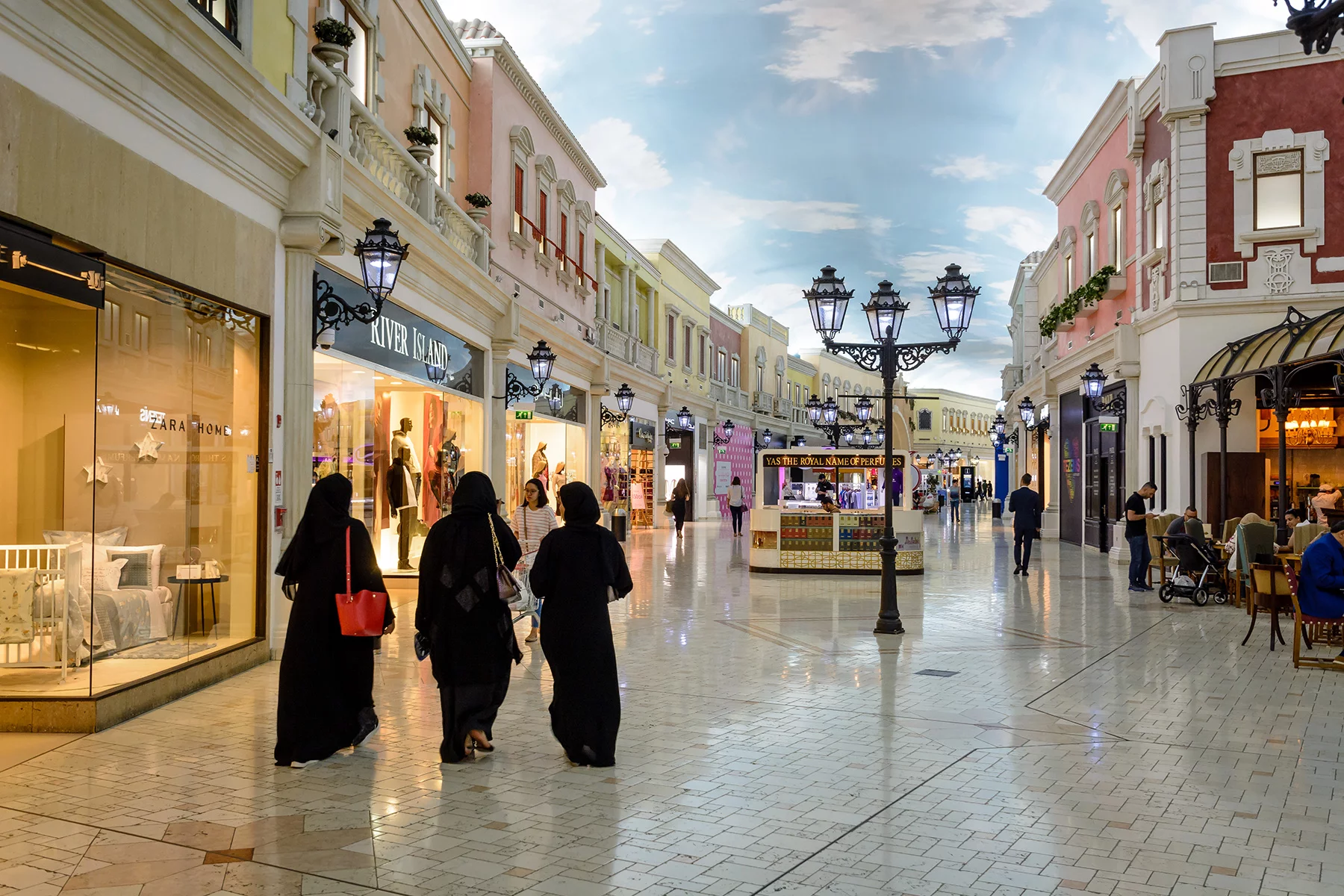
The cost of transportation in Qatar
In 2025, the monthly average cost of transportation in Qatar is forecasted to be QR620 per person.
Public transport
Qatar’s public transport network is fast, efficient, and generally affordable. Depending on your location, you travel easily and comfortably using the bus, metro, train, or tram.
Fares vary by mode of transport. For example, two bus trips within 24 hours cost QR10, while a single metro fare is QR2. If you are planning to commute to work, it’s recommended you get a monthly plan to travel at a discounted cost. These cost between QR730 and QR1,460.
Driving and vehicle costs
The most common way of getting around in Qatar is by car. While driving (or being driven) presents a lot more freedom, it’s also generally more expensive than public transport. Car owners pay an average of QR7,300–18,250 per month for the use and maintenance of their vehicle.
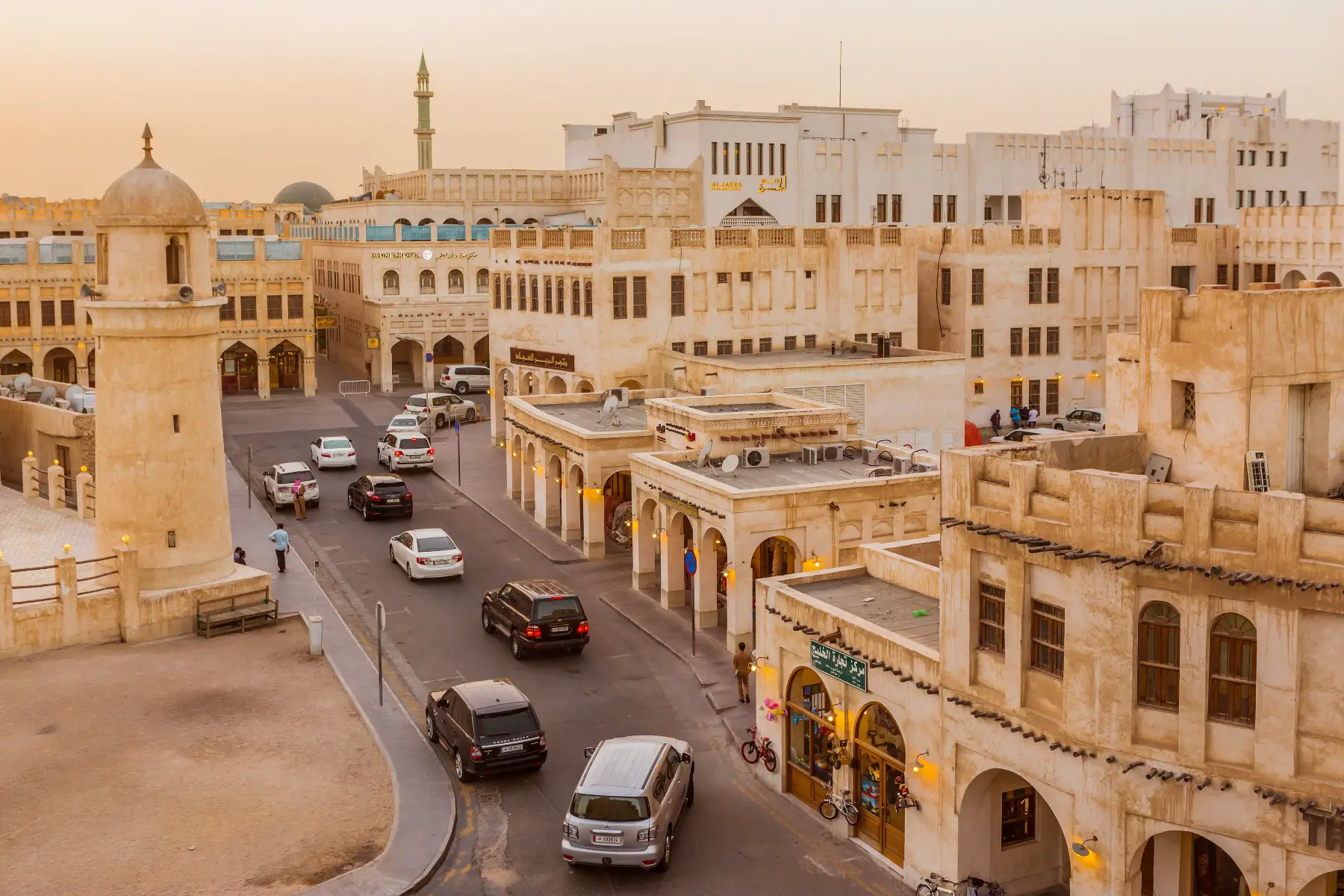
Beyond the initial costs of lessons, a driving license, and the actual purchase of the vehicle, you’ll need to budget for:
- Car insurance – the mandatory Third Party Liability insurance cost between 4% to 7% of your car’s value a year
- Fuel costs – as of January 2025, gasoline costs QR2.00–2.10 per liter, and diesel costs QR2.05 per liter
- Maintenance – vehicles that are older than three years must pass annual inspections, which cost QR150 for a private vehicle
For more about driving costs, mandatory insurance, and exchanging your foreign driver’s license, see our article on driving in Qatar.
How much does leisure and entertainment cost?
Movie theaters and cinemas
A standard cinema ticket in Qatar costs around QR35–55, depending on the location and the screening. Some movie theaters also offer discounts if you pay by visa and watch a screening on a particular day.
Restaurants
The estimated monthly spending is QR290 per person on hospitality and restaurants.
Depending on your tastes and date night, eating at a restaurant doesn’t have to be expensive. A local eatery may charge you QR60–70 for a meal, while a three-course dinner at a mid-range restaurant will set you back about QR200–450.
Of course, prices rise steeply for exclusive fine-dining experiences.

Sports
Gym memberships cost around QR400–700 per month, depending on the club and location. If you sign up during Ramadan, you may get a discounted deal for QR100–200 per month.
It’s recommended you try out different gyms before signing up for a membership.
The cost of Qatari education and childcare
Childcare
Working parents with young children may need to arrange for childcare from time to time. In Qatar, options include nurseries, preschools or kindergartens, and independent childminders.
Babies and toddlers (ages 2 months to 4) can attend public nurseries, which charge fees according to the government’s set standards. As of January 2025, these have not yet been determined (in Arabic).
After that, families can enroll their children in a private preschool from the ages of 4–5. Qatar has a wide range of Arabic and international kindergartens available, most of which are located in Doha. The tuition fees vary between QR400 and QR3,350 per school term.
Many local and expat residents also choose to hire a nanny or au pair. In Qatar, Nannies have an average salary of QR2,070 per month, whereas au pairs require a work visa, food, accommodation, and a minimum wage.
Because of the costs associated with bringing in an educated childcare specialist from overseas, au pairs are one of the more expensive options.

Children’s education
Qatar’s public education system provides free and good-quality schooling to Qatari nationals. Parents will only need to pay for books, materials, and small donations.
If you prefer to (or must) send your children to a bilingual or private school, you will need to pay tuition fees. These vary widely depending on the school’s curriculum, location, and reputation.
For example, the cost of an international primary school ranges from QR25,000–50,000 per year. This can go up to QR80,000/year for high school. Parents will also need to take into account the costs of transport, uniforms, extracurricular activities, and materials.
Read our article on private international schools to learn more about school curriculums and fees in Qatar.
University tuition fees
Studying in Qatar is quite affordable compared to some other countries.
The cost of a bachelor’s degree varies greatly per university and study program. Some charge QR12,500–20,000 per year, whereas others will set you back QR50,000–100,000 per year. Master students pay roughly QR2,000–2,600 per credit hour.
Find out more about degree programs and costs by reading our article on studying in Qatar.
How does Qatar compare to the rest of the world?
Qatar performs relatively well when it comes to standards of living. For example, the country ranks 43rd in the world on the Human Development Index. Similarly, the 2024 Global Liveability Index ranks Doha as the fourth most liveable city in the Middle East and North Africa (MENA) region.
The highest Qatari city on the 2024 Mercer’s quality of living index is Doha (109th), which is below other major capitals like New York (45th), Rome (59th), Seoul (81st), and Cape Town (105th). The city beats out Bangkok (124th), Ankara (138th), and Jakarta (148th).

The cost of living in Doha
Compared to other capital cities, Doha’s cost of living is (as of January 2025):
- 58.3% cheaper than New York (the US)
- 40.6% cheaper than London (the UK)
- 29.7% cheaper than Amsterdam (the Netherlands)
- 173.2% more expensive than Delhi (India)
- 187.4% more expensive than Kathmandu (Nepal)
- 196.4% more expensive than Dhaka (Bangladesh)
- 217.2% more expensive than Cairo (Egypt)
The cost of living in Al-Rayyan
Al-Rayyan is Qatar’s second-largest city, with an estimated population of around 815,900 people (2024). It was one of the venues for the 2022 FIFA World Cup and 2023 AFC Asian Cup and will host the FIBA Basketball World Cup in 2027.
The cost of living in Al-Rayyan is typically cheaper than in Doha (as of January 2025). For example, grocery prices in the city are:
- 67.5% cheaper than New York (the US)
- 46.7% cheaper than London (the UK)
- 44.2% cheaper than Amsterdam (the Netherlands)
- 16.7% more expensive than Dhaka (Bangladesh)
- 31.4% more expensive than Kathmandu (Nepal)
- 41.2% more expensive than Delhi (India)
- 59.7% more expensive than Cairo (Egypt)
Financial support for the cost of living in Qatar
Qatari nationals are entitled to social security benefits, depending on their living situation. Low-income households can apply for Social Assistance Allowance (طلب مساعدة ضمان اجتماعي للأسر المحتاجة). This benefit is QR6,000 per month for single persons, while families receive an additional QR2,000 for a wife and QR1,000 per child.

Other benefits that can help you with the cost of living in Qatar:
- Housing allowance – if you have contributed to the social security fund for 15 years, you are entitled to receive a housing allowance
- Invalidity pension – available to people living with a permanent disability or incapacity to work
- Social housing – there are several programs, including for married people, divorced people, widows, and orphans
- Social Security Pension – available for a wide range of situations, including people who are unmarried, married, divorced, abandoned, orphaned, and widowed. There’s even an option for families whose breadwinners have gone missing.
Visit the Ministry of Social Development and Family’s website for more information about social security in Qatar.
Unfortunately, foreign expats are not eligible for government financial aid to help with the cost of living in Qatar. However, since zakat (زكاة – taking care of the vulnerable) is a crucial pillar of Islam, the country has numerous charities that can help. For example, Hifz Alnaema Center (حفظ النعمة) in Doha offers food, clothing, furniture, and electronic devices to needy individuals and families.
Tips on how to save money in Qatar
All affordability is relative to your household income and size. A single bachelor may have more to spend than a family of four. Here are some tips for saving money while living in Qatar:
- Shop smartly at wholesale markets – wholesale markets often have fresh produce and seafood at a lower price than supermarkets. Local products are also sold at a better rate than imported goods.
- Join loyalty programs and plan meals ahead – many supermarkets, like Carrefour and Lulu Hypermarket, offer loyalty cards that provide cashback, discounts, and exclusive deals.
- Dine out strategically – when you are eating out, look for weekday dining promotions offered by hotels and restaurants. You can also dine out for cheap when you go for buffets or all-you-can-eat deals, especially during off-peak times.
- Embrace public transport and ride-sharing services – Qatar has a well-connected public transport system. Opt for a monthly or yearly transport pass or use a ride-sharing app to lower your travel costs.
- Stay fit without splurging – use public parks for outdoor workouts instead of expensive gym memberships. You can also join free fitness groups or community activities.
- Use energy wisely – save on electricity by insulating your home, using energy-efficient appliances, and taking advantage of off-peak energy tariffs (e.g., to do your washing). You can also apply for the KAHRAMAA conservation program to enjoy higher savings on energy and water savings.
- Buy your goods during special holidays – Qatar’s malls are tempting, but try to shop during sales or festivals like the Qatar Summer Festival, which offers huge discounts.
Useful resources
- Ministry of Commerce & Industry (MOCI – وزارة التجارة والصناعة) – official government website of the department responsible for consumer protection and combating commercial fraud




